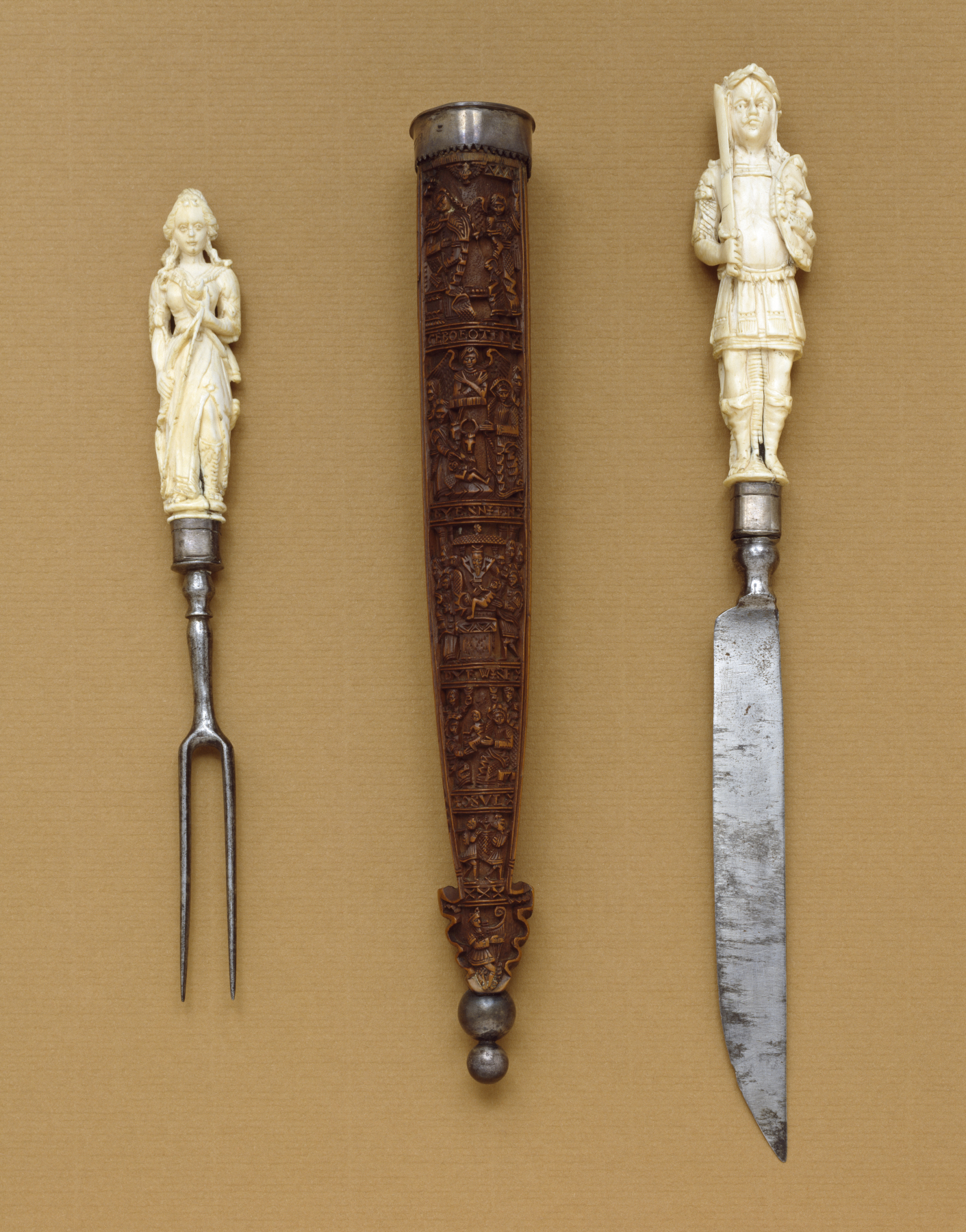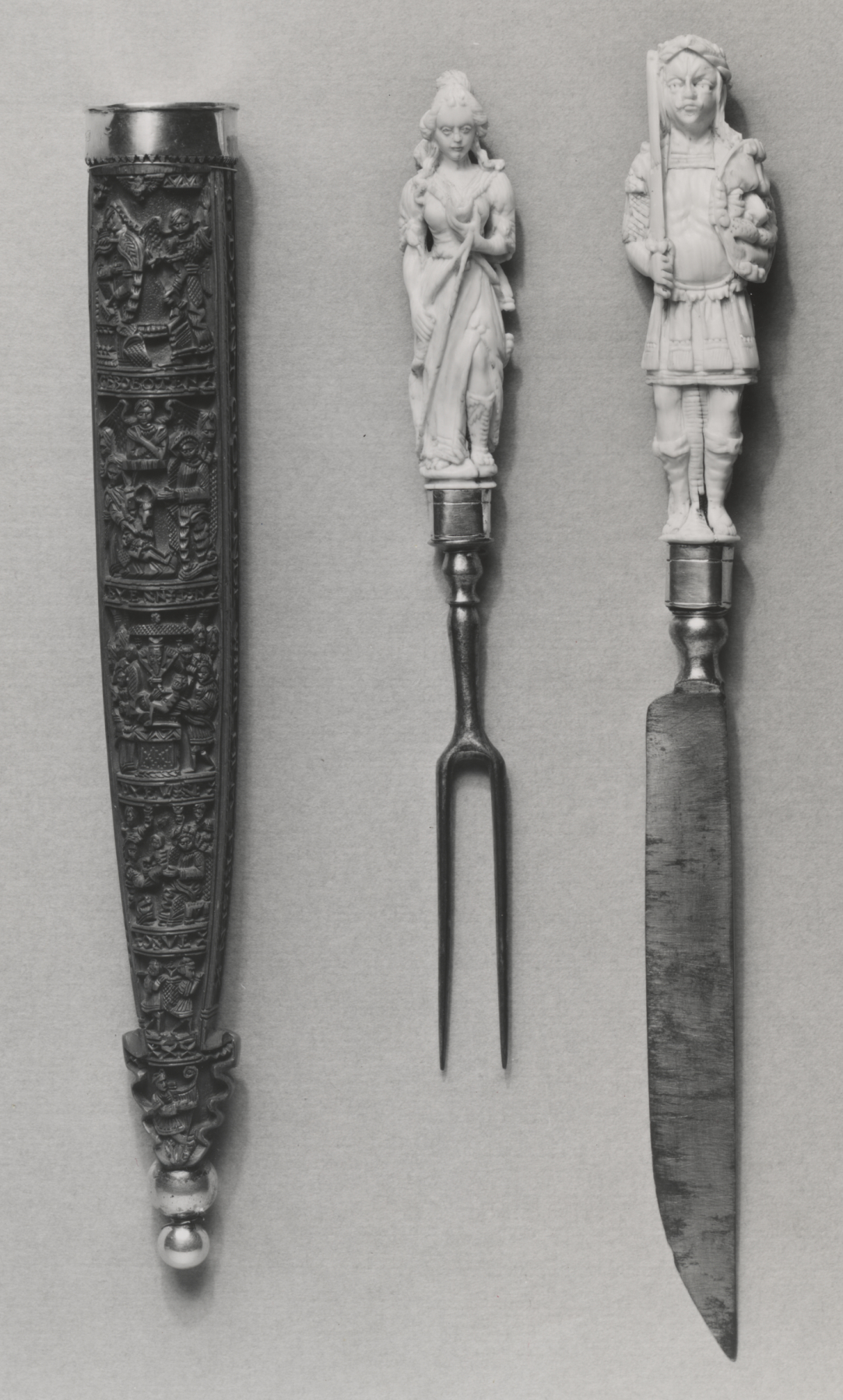Knife-and-Fork Set with Mars and Diana
(Baroque Europe )
Knife-and-fork sets were common wedding presents among the elite in Flanders and the Dutch Republic during the 1600s. Pairing forceful Mars, god of war, with virtuous but resourceful Diana, goddess of the hunt, was a gesture to the qualities that couples saw in each other, although these two gods were never a pair in Greco-Roman mythology.
In the 1600s, one was expected to have one's own eating utensils, and the use of a fork was a new sign of civility; in the Renaissance, most people, including the nobility, ate with their hands. Though ostensibly for use, knife and fork sets with handles of ivory or semiprecious stone could be displayed as prestige gifts and as demonstrations of virtuosity in carving.
Provenance
Provenance (from the French provenir, 'to come from/forth') is the chronology of the ownership, custody, or location of a historical object. Learn more about provenance at the Walters.
Hollingworth Magniac Collection, Culworth [date and mode of acquisition unknown]; Hollingworth Magniac Sale, Christie's, London, July 4, 1892, lot 671; Henry Walters, Baltimore, 1902 [mode of acquisition unknown]; Walters Art Museum, 1931, by bequest.
Geographies
Germany
(Place of Origin)
Netherlands, Holland (Place of Origin)
Measurements
3 5/8 in. (9.2 cm)
Credit Line
Acquired by Henry Walters, 1902
Location in Museum
Not on view
Accession Number
In libraries, galleries, museums, and archives, an accession number is a unique identifier assigned to each object in the collection.
In libraries, galleries, museums, and archives, an accession number is a unique identifier assigned to each object in the collection.
VO.127 (71.374, 71.374.A, 71.374.B, 71.374.C)




